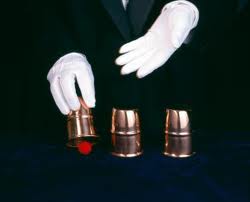
Having dwelled, last month, on several posts about “rules” and concepts I advised writers to ignore or at least salt down, I thought I should balance it with some more positive material; tips to help writers work better. It surprises many to learn that I actually have a Bachelor’s degree in Creative Writing. From the University of Washington, to be precise: Go Huskies! But I learned more while writing for a living: meeting deadlines for newspapers, pressure to write better than the staff on magazines, measuring copy against sales figures for catalogs. And in all those classes and decades of exposure to pro writers, I only picked up a bare handful of tips that I feel are useful enough to pass along to others. So, since I rate in top echelons of truly wonderful guys, that’s what I’m going to do. These are things that actually help and actually work. They are additive, rather than prohibitive tips, ranging from truly simplistic to fairly arcane. And both kind of mystical.
I’ll start out at the simple end of the scale, with something that might just seem silly to many. But for some reason it works. I first heard it from the editor of an Army newspaper, and later, almost word for word, while interviewing a great American writer, the late Ross Thomas. Here goes.
When you run into trouble with a piece of writing–having trouble starting it or making it flow or grasping the shape of it–take your first (chapter, page, section, scene, paragraph, sentence) and switch it with the second (chapter, page, section, scene, paragraph, sentence).
Ta daaaaa!
There really isn’t any theory behind this, and only conjecture on why it so frequently works. But try it out and see for yourself. It can be a powerful ice-breaker. Part of what it works on is most obvious to screenwriters. They are used to the advice to cut right into the scene, then cut right out. Vital advice for drama writing. And not a bad idea for fiction. Ever notice how you can see three minutes of a movie on TV and, regardless of the cast and production values, spot if it’s a made-for-TV film? A big clue comes when scenes shift. A car pulls up. A guy gets out. He walks towards the house, maybe moves a kid’s bike. He knocks at the door. The lady opens it. Can I help you? I’m a police officer ma’am. Yes?
Meanwhile, what happens in the Hollywood film? A woman screams and faints, the cop catches her. When she can speak she says, How did it happen? And he tells her.
So the viewer is immediately snared into fireworks and vital signs, not stalled in the Burbs. So if your first line is “John Webster looked around noticing expository description as he approached the Smith home. Fit, in his forties, he…” consider a change, just to see what happens. (I HATE stories that start off with a character’s full name, by the way. Personal allergy.)
 What if it starts off with, “She obviously hated Webster’s guts.”? Or “She came out of the bathroom wearing a towel and a smirk.” Or “They shot the defrocked priest three times, then poured a beer over him.” ? Or, really, anything more interesting. Try looking ahead for the point where things actually start to happen, to a dramatic moment that defines the scene, perhaps even shows who your characters are and how they act before we even know who they are? And swap that chunk for your first chunk? You can call this “cinematic” or “front-loaded” or whatever you wish, but what matters is if you shuffle things around and suddenly say, “Hey, that works much better.” And maybe even, “To hell with swapping, I’m just tossing out that first page.”
What if it starts off with, “She obviously hated Webster’s guts.”? Or “She came out of the bathroom wearing a towel and a smirk.” Or “They shot the defrocked priest three times, then poured a beer over him.” ? Or, really, anything more interesting. Try looking ahead for the point where things actually start to happen, to a dramatic moment that defines the scene, perhaps even shows who your characters are and how they act before we even know who they are? And swap that chunk for your first chunk? You can call this “cinematic” or “front-loaded” or whatever you wish, but what matters is if you shuffle things around and suddenly say, “Hey, that works much better.” And maybe even, “To hell with swapping, I’m just tossing out that first page.”
I’m not really pushing a different style or mentality of writing here, though it might sound that way. I’m talking about sequencing what you already have, looking for it to fall into a more cohesive composition.
It’s amazing how often just swapping the first two sentences works. It seems too trivial to bother with, and hard to explain, but you’d be surprised how it can open things up for you. I actually had a guy tell me he switched the order of two books in an epic fantasy series. The real meat of it developed in the second book, and he was seeing the first as a sort of prequel.
“Writing coaches” are always suggesting bizarre exercises, but this isn’t like that. It’s mechanics, like monkeying with the timing of a spark plug. The only way to tell if the new timing works is by listening to the sound of the engine. Give it a try. If it doesn’t work for you, switch everything back and sue me.
* * * * *
Lin Robinson is the author of several books and manuals, available at Amazon. An award-winning journalist and magazine/catalog guru in his mis-spent youth, he now lives in Mexico and doesn’t even drink much. You can learn more about Lin at his website. You can also follow him on LinkedIn and Twitter.

It might be hard to explain, but it's clear as crystal from this end. I know it works – I just tried it. Now why… never mind. I just love this kind of duh… discovery.
Brillo, Lin.
Looking at things in a different way is a great way for poking the creative spirits awake.
I hope one day to be able to notice I need to do it before I get frustrated and annoyed. But maybe that's my creative process.
I have heard this one, but you actually explained why it works. I will try it now. Thanks.
I haven't actually heard this trick, but may try it. One that was told to me was to start with the action, start with the dialogue, and I am one who much prefers reading a book that starts that way.
Another great post, Lin. Thank you
Hey, this might work. I'm gonna check it on my current wip. Cool!
Yes! I use this technique in just about everything I write, including posts. It may be a trivial thing but I rarely write the title first. I find if I fill in the title once the post is done it is a) much more relevant and b) doesn't straight-jacket my writing into a direction it may not want to go.
Great tip. I hope there will be more coming!
I do my best to start things out with a bang, or explosion, or sex, or something really wild. Perhaps an intergalactic space battle, yes, that's the ticket!
Lovely post!
Great post. As an articles editor, I learned a closely related trick. If you need to cut a few column inches from an article and have no time to really work at it, throw out the first paragraph and 8 times out of 10 the piece still reads just fine. The final paragraph is next in line on the quick-chop block. Introduction and conclusion are too often the least interesting parts of the sandwich. It's the meat in the middle that readers devour.
–Larry Constantine (pen name, Lior Samson)
Interesting, Larry. Those who don't pyramid copy are slated to lose. (I always thought editors just tossed stuff out at random 🙂
Yeah, K. I remember an old National Lampoon bit on "Writing Good". In addition to recommending that stories end by having everybody get run over by a truck, the had the perfect first sentence, "I kicked in the door and came in her mouth." A little extreme, but still…
Thanks for all the comments, folks. It's always nice to know somebody actually reads this stuff. 🙂
I appreciate all your advice and enjoy your humor best of all–something you probably didn't pick up in Washington, but were blessed with since birth.
Awww, thanks Eve.
An interesting, but possibly pertinent sidelight on my career at UW. During my time there I was fooling with the campus paper while also writing for a local daily. I was also taking some criminology courses while working at the county jail.
In both cases I was told that I wasn't really getting it because I had been contaminated by real world experience.
Nothing like 'real world experience' to contaminate the party line.
LOL It's amazing people can say that with a straight face. A guy's been telling me about prisons whose never set foot inside one, then tells my that having done so gives you the wrong impression.
Only in academia.
Like it!
Thanks for the tip Lin. I've actually used this on more than a few occasions. It's nice to know that the pro's consider it a technique of sorts. All this time I thought it was just my screwed up way of writing.
😉
I'm a long time member of the Screwed Up School of writers.
Nifty tip, thanks! And I'm cringing, 'cause I just opened the manuscript I'm editing to find…yes…the protagonist's full name in the first sentence. 😉
Great post! I agree. I like stories that start with something enticing and fill in the blanks later 🙂
That's quite a tip. I sometimes proceed to the next chapter and then fill in later. I'll give this a try on a couple of short stories that I want to finish, but everything I tried didn't work.
I loved the comment about being infected by the real world. Who are they writing for? Aliens?
Thanks for the advice. I changed the start of my newest story. I now say – People look different when they are dead. Is that an attention getter? (I know not a word – getter) but I'm wondering.
And the longer they're dead, the more different they look.
(-:
This sounds like the sort of line that a lot of books lead out with.
Grabs me. 🙂
Great advice. Freeing up the order is also a useful for uprooting backstory that is camouflaged as a vital scene. The problem is that it is a little addictive to switch scenes around, kind of like a game of Tetris.
Lin, you always give great advice! And yes, I believe this can work in many cases. It is always so hard to just get those first few sentences out, and then it just seems to flow later. Indeed, we need to always go back and contemplate our beginnings. Take care!